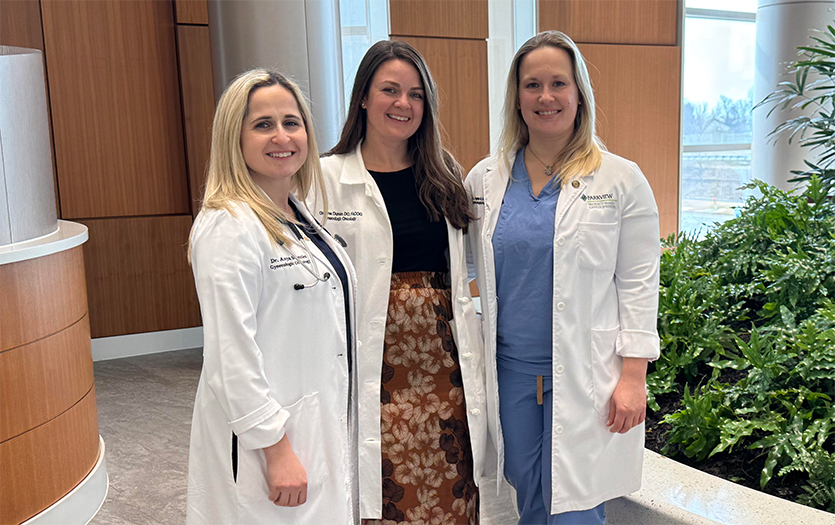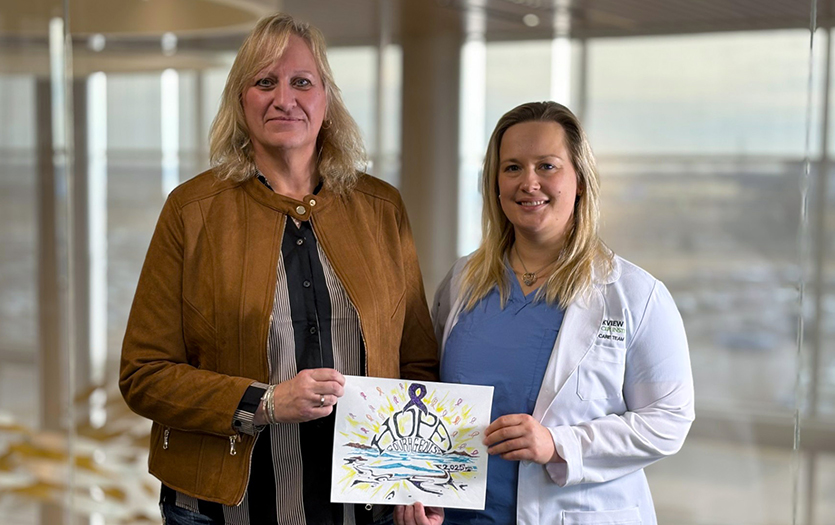.jpg)
In an effort to catch more cancer cases emerging in younger women, the U.S. Preventive Services Task Force announced earlier this year its recommendation that women should get regular mammograms starting at age 40, joining a growing medical community consensus advocating for earlier screening.
And as Breast Cancer Awareness Month kicks off in October, our doctors are adding their voices to the chorus and stressing the importance of getting routine mammograms.
Recommendations for when to start looking for breast cancer have been evolving in recent years. In the past, women were advised to start at age 50, but a rising incidence of cases in younger women has caused medical professionals to reevaluate their position, and the suggested screening age has fallen over time.
The new recommendation from the U.S. Preventive Services Task Force, an independent volunteer panel of national disease prevention experts, aligns that group with the American Cancer Society and American Medical Association, which had already recommended mammograms at age 40.
Breast cancer is the second-most common type of cancer in the U.S. after skin cancer, accounting for about 30% of all new cancer cases according to the American Cancer Society. Around 367,000 Americans are expected to be diagnosed with breast cancer this year alone.
Breast cancer remains the second leading cause of cancer death for women, although death rates have been in steady decline for decades due to increased screening, greater awareness and improved treatments.
Like all cancers, early detection is critical to improving outcomes. Five-year survival rates for localized breast cancers – cancer that hasn’t spread to other parts of the body – are 99%, according to the American Cancer Society, and early and regular mammograms are more likely to catch a cancerous growth before it spreads throughout the body.
“We know that we are seeing increased survival from breast cancer, and I attribute that to advancements in treatment and early detection,” Lindsay Hardley, DO, breast surgeon, Parkview Packnett Family Cancer Institute (PFCI). “If you catch it early, tumors are more likely to be smaller and there’s less risk that it’s reached the lymph nodes. It can dramatically change a patient’s therapy recommendations and their surgical options.”
While chemotherapy and radiation treatments are more likely to depend on the type of cancer and tumor, earlier detection of smaller masses can give women more flexibility in choosing their surgical treatment. Lumpectomies, where surgeons target the abnormal mass but aim to save as much healthy tissue as possible, are not always an option for larger tumors, so early detection can help patients maintain more of their natural breast.
Parkview recommends annual 3D mammography for women at average risk starting at age 40, Dr. Hardley said. As doctors have seen more breast cancer cases in younger women – about 1 in 5 new breast cancer patients at Parkview in 2023 were under age 50 – there is greater agreement among medical and advocacy groups to start screening earlier.
Mammograms take X-ray images of a woman’s breasts, allowing for an inside view of the tissue. During the procedure, the breast is held in place with plates while the X-ray is taken. Afterward, a radiologist reviews the images to check for any abnormalities and, if found, recommends follow-up testing.
Brittany Schreiber, lead mammography technologist at the Parkview Packnett Family Cancer Institute mammography department, said getting a screening has become quicker and easier over time. An appointment usually takes about 30 minutes to complete and although many patients are concerned about pain during the procedure, better imaging devices have helped to reduce discomfort.
“We do compress the breast and that’s the one big fear of a mammogram is that it can be painful,” Brittany said. “Over the years things have gotten a lot better. Mammograms aren’t as painful as they used to be because our technology has improved, and we don’t need to compress the breast as much. The vast majority of mammograms, about 9 in 10, come back normal and no further follow-up is required,"
For the ones that don’t, that doesn’t instantly mean cancer, as sometimes doctors just need more information to help them determine what they’re seeing on the image, she said. And some women have dense breast tissue, which can make it more difficult for doctors to identify exactly what they’re seeing on a mammogram.
Women may develop other types of benign growths within their breast tissue such as cysts or fibroadenomas. Regular mammograms can help doctors differentiate between benign or cancerous growths and create a historical record to allow for monitoring of changes over time.
“Mammograms are wonderful but sometimes there are some unanswered questions,” Brittany said. “We can look at that with different views. Maybe even do an ultrasound to make sure everything is normal. In some cases, patients end up having to go for a biopsy. But, for the most part, screening mammograms are typically normal.”
Indiana reported 921 breast cancer deaths in 2022, the latest year of data available through the Centers for Disease Control and Prevention (CDC), and it was within the 15 worst states for breast cancer death rate at 20.4 per 100,000.
However, decades of research, new treatments, new technology and increased awareness have greatly improved breast cancer outcomes. Since 1989, the breast cancer death rate has dropped 42% and the five-year survival rate has improved to 91%, according to the American Cancer Society.
“Significant strides have been made in the prevention, early detection and treatment of breast cancers in the past 10 years. Improved outcomes in breast cancer begin with prevention and early detection,” Alan Yahanda, MD, president, Parkview Packnett Family Cancer Institute, said.
Not only have treatments improved, but prevention has improved too, Yahanda said. The cancer institute hosts a Cancer Risk Reduction and Genetics Clinic where patients with a history of breast cancer can be evaluated and have their personal risk for cancer assessed. If appropriate, the institute also offers genetic testing to look for markers that might make them more likely to develop cancer.
“As for early detection of breast cancer, annual mammography is key,” Dr. Yahanda said. “Improved imaging technology and artificial intelligence have made obtaining a mammogram and its interpretation more accurate and reliable, assuring that we can find cancers at an earlier stage.”
Parkview offers mammography services through the Breast Diagnostic Centers located near Parkview Regional Medical Center and Parkview Hospital Randallia in Fort Wayne, as well as the new Parkview Southwest Outpatient Center. Patients can also schedule mammograms with the Francine’s Friends Mobile Mammography unit at 260-483-1847.Breast cancer was a driving force for the development of Parkview’s cancer institute after former CEO Michael Packnett’s wife, Donna, was diagnosed with breast cancer in 2012.
The opening of the cancer institute in 2018 allowed Parkview to consolidate cancer care providers under one roof, enabling physicians to cooperate and collaborate on treatment and to improve accessibility for patients with a one-stop location conveniently situated just off Interstate 69 in Fort Wayne. The institute was rebranded in 2022 with the Packnett family name in appreciation for the roles the couple played in the development and support of the facility.
Before treatment starts, cancer cases at the Parkview Packnett Family Cancer Institute are reviewed and staged, and complex cases go for review with the institute’s tumor board – a multi-disciplinary group of physicians who review the specific details of the case and recommend a treatment regimen tailored to the patient’s cancer type and circumstances.
Having cancer services together in one place has not only improved convenience, but also provides easy communication and reassurance that everyone on the care team is working together during what may be the most challenging health incident of patients’ lives.
“The reviews my patients leave aren’t just about me, but about the entire team,” Dr. Hardley said. “Everybody is welcoming and approachable and kind, and that sets the tone to allow patients to relax. The proximity between radiology and surgery and medical oncology and radiation oncology allows our patients to have less stress and know that everyone on the team is communicating. They don’t ever feel like they’re lost in the process.”
Breast Cancer by the Numbers
367,220 projected new U.S. breast cancer diagnoses in 2024
30% of new cancer diagnoses in women
13% average risk a women will develop breast cancer in her lifetime
42,250 projected U.S. deaths from breast cancer in 2024
921 breast cancer deaths in Indiana in 2022
4 million-plus breast cancer survivors in the U.S.
Learn more about our Breast Cancer Care team and services available at Parkview Packnett Family Cancer Institute here.



